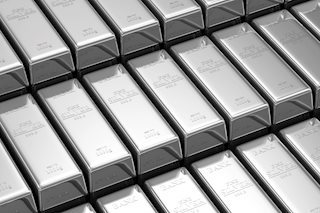Silver Price Forecast: XAG/USD falls due to Trump trade optimism
|
- Silver price depreciates as safe-haven metals face challenges over Trump trade rally.
- Early exit polls indicate former President Donald Trump currently holds an edge over Vice President Kamala Harris.
- Improved US Treasury yields contribute to the downward pressure on non-yielding Silver.
Silver price (XAG/USD) struggled to hold onto recent gains, trading around $32.10 per troy ounce during the Asian session on Wednesday. The dollar-denominated precious metal faces downward pressure from a stronger US Dollar (USD), which is likely linked to a rally sparked by the favorable results for the Republican candidate in the US presidential election.
As exit polls begin to show growing support for former President Donald Trump, the likelihood of him becoming the 47th president is increasing. This renewed optimism surrounding the "Trump trade" is lifting market sentiment, creating downward pressure on safe-haven assets like Silver.
Early exit poll results from Wisconsin indicate a lead for Republican candidate Donald Trump, with 56% of the vote compared to 42.5%, based on 7.5% of expected votes counted. In North Carolina, exit polls show a tight race between Trump and Kamala Harris, with 50% of the votes counted. In Michigan, with 12% of votes counted, Harris' lead has shrunk from 61% to 53%.
Moreover, initial results show Harris leading Trump 61% to 38%, with 46% of the votes tallied in Nebraska's District 2. Meanwhile, early exit polls from Georgia, one of the first states to report, show a slight edge for Trump. With 16 electoral votes up for grabs, preliminary data suggests Trump holds a 10% lead over Harris, although this is based on less than 1% of votes counted, according to The Washington Post.
Additionally, non-yielding assets like Silver are facing headwinds as US Treasury yields rise, with the 2-year and 10-year US Treasury bond yields at 4.23% and 4.34%, respectively, at the time of writing. Market attention is focused on the balance of power in Congress, as a sweep by either party could bring substantial changes to spending and tax policies, influencing broader market dynamics.
Silver FAQs
Silver is a precious metal highly traded among investors. It has been historically used as a store of value and a medium of exchange. Although less popular than Gold, traders may turn to Silver to diversify their investment portfolio, for its intrinsic value or as a potential hedge during high-inflation periods. Investors can buy physical Silver, in coins or in bars, or trade it through vehicles such as Exchange Traded Funds, which track its price on international markets.
Silver prices can move due to a wide range of factors. Geopolitical instability or fears of a deep recession can make Silver price escalate due to its safe-haven status, although to a lesser extent than Gold's. As a yieldless asset, Silver tends to rise with lower interest rates. Its moves also depend on how the US Dollar (USD) behaves as the asset is priced in dollars (XAG/USD). A strong Dollar tends to keep the price of Silver at bay, whereas a weaker Dollar is likely to propel prices up. Other factors such as investment demand, mining supply – Silver is much more abundant than Gold – and recycling rates can also affect prices.
Silver is widely used in industry, particularly in sectors such as electronics or solar energy, as it has one of the highest electric conductivity of all metals – more than Copper and Gold. A surge in demand can increase prices, while a decline tends to lower them. Dynamics in the US, Chinese and Indian economies can also contribute to price swings: for the US and particularly China, their big industrial sectors use Silver in various processes; in India, consumers’ demand for the precious metal for jewellery also plays a key role in setting prices.
Silver prices tend to follow Gold's moves. When Gold prices rise, Silver typically follows suit, as their status as safe-haven assets is similar. The Gold/Silver ratio, which shows the number of ounces of Silver needed to equal the value of one ounce of Gold, may help to determine the relative valuation between both metals. Some investors may consider a high ratio as an indicator that Silver is undervalued, or Gold is overvalued. On the contrary, a low ratio might suggest that Gold is undervalued relative to Silver.
Information on these pages contains forward-looking statements that involve risks and uncertainties. Markets and instruments profiled on this page are for informational purposes only and should not in any way come across as a recommendation to buy or sell in these assets. You should do your own thorough research before making any investment decisions. FXStreet does not in any way guarantee that this information is free from mistakes, errors, or material misstatements. It also does not guarantee that this information is of a timely nature. Investing in Open Markets involves a great deal of risk, including the loss of all or a portion of your investment, as well as emotional distress. All risks, losses and costs associated with investing, including total loss of principal, are your responsibility. The views and opinions expressed in this article are those of the authors and do not necessarily reflect the official policy or position of FXStreet nor its advertisers.